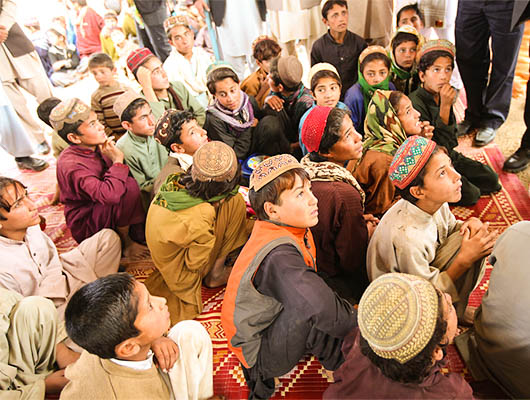Education Crisis for Pakistan’s Internally Displaced Persons

As of 2015, there have been approximately 700,000 internally displaced persons in the volatile North Waziristan region of Pakistan as a consequence of Taliban insurgency. Of these 700,000, around 300,000 are children of a school-going age range. For these children, a stable education remains a dream.
In late 2009, militant threats in the northwestern tribal areas of North Waziristan escalated dramatically. After various military offensives against militants in the surrounding regions of South Waziristan and Swat, the Pakistani army launched Operation Zarb-e-Azb in January 2014. The military has since been conducting an extensive yet lengthy military operation against the Taliban militants in North Waziristan.
The increasingly dangerous circumstances in the Taliban stronghold has led to a mass exodus of the region’s residents. This military intervention, despite its exigent need, has created significant issues for the displaced people as well as the Pakistani government. The already financially-crippled Pakistani government is thus faced with the immense challenge of providing relief for the refugees.
The refugees from Northern Waziristan add to the almost 1 million refugees who have been displaced during the war on terrorism in the country. The cost of providing basic healthcare and resources to the refugees has been allotted $1 million from the Pakistani government, with substantial bolstering from the United States and China.
Despite the funding, the conditions in the refugee camps are less than satisfactory. As the provision of shelter and food becomes an issue, the educational needs of refugee children have taken a backseat. Temporary schools established for refugee children are in abysmal conditions and are impossibly short-staffed. Many parents are told to enroll their children in far-off government schools. However, many government-run schools are being used as temporary shelters, and not as schools.
According to UNHCR, of the 300,000 children in refugee camps, only 5% are enrolled in schools, whether public, private or NGO-run. Many students old enough to work are choosing menial jobs over continuing their education so as to financially support their families.
Prior to the refugee crisis, the literacy rates in the Northern Waziristan district were only 16% overall and a deplorable 1.67% for girls. The increased presence of fundamentalists in the region who target schools—and, specifically, female education—has adversely affected the state of education in the region.
Unfortunately, for the families returning home this summer, the conditions for education have not improved. Many of the schools have been destroyed through the course of the clashes between the army and the Taliban; others are still occupied by the army as temporary bases. As schools across the country reopen in September, students in North Waziristan continue to face an uncertain, unstable future.
The government has so far failed to come up with a successful and effective plan for the rehabilitation of these students. Recently, the higher education commission announced a stipend of Rs. 2,000 for every student enrolled in post-secondary education; however, no such plan has been revealed for the elementary, middle or high school students.
The director of education for the Federally Administered Tribal Areas (FATA)—the education authority for North Waziristan—has suggested that UNICEF aid be used to establish schools in tents for IDPs who continue to reside in the camps. Additionally, the director has recommended a second shift for schools in neighboring areas, like Bannu and Lakki Marwat, specifically for IDPs. The feasibility and potential for success of both these measures have been met with criticism and apprehension from many nonprofit agencies, as well as the refugees themselves.
As the government deadline for the complete return of North Waziristan IDPs to their homes—set for January 2016—fast approaches, it is imperative that the educational authorities within the government focus on the rehabilitation of these students. The Pakistani government, with assistance from its aides, needs to make education in the region a priority in its budget. The goal of the provincial government should not be pre-2009, but to bring the region to a literacy rate at least on par with the rest of the country, especially for girls. An effective strategy and delegation of resources to educate the children of North Waziristan are crucial to the long-term stability of the region.
– Atifah Safi
Sources: UNHCR, FATA Disaster Management Authority, Aljazeera, Aljazeera, Dawn, Pakistan Today
Photo: Flickr
